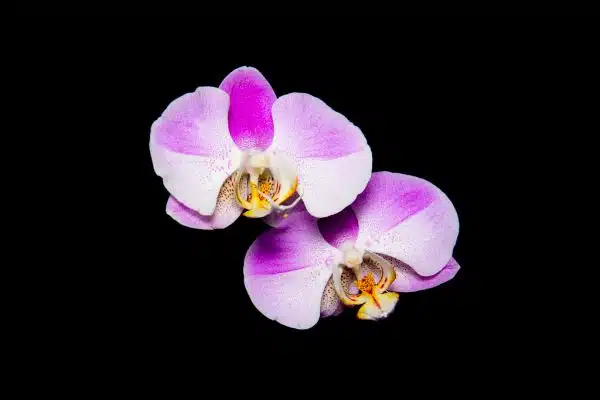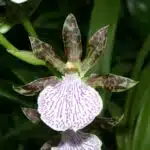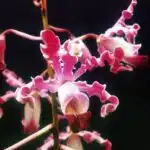Orchids are some of the most exotic and beautiful plants in the world. Their vibrant colors, intricate shapes, and delicate fragrance make them a popular choice for gardeners and plant enthusiasts alike. However, to keep these plants healthy and thriving, it is important to provide them with the proper nutrients they need to grow. In this article, we will explore the best ways to fertilize orchids and ensure that they remain healthy and vibrant.
Fertilizing orchids can be a complex process that requires careful attention to detail. There are many factors to consider when choosing the right fertilizer, including the type of orchid, its growth stage, and the environment in which it is growing. Additionally, over-fertilization can be just as harmful as under-fertilization, making it crucial to find the right balance for each individual plant. In this article, we will discuss various methods for fertilizing orchids effectively while avoiding common mistakes that can negatively impact their growth.
Understanding Orchid Nutrition
Orchids are some of the most beautiful and exotic plants available in the world. They come in a vast range of shapes, colours, and sizes that can mesmerize anyone. However, getting them to grow healthy and bloom requires a lot of care and attention. Understanding orchid nutrition is crucial to growing these plants successfully.
One of the most common issues experienced by orchid growers is nutrient deficiencies. Orchids require a balanced diet containing essential macronutrients such as nitrogen (N), phosphorus (P), potassium (K), calcium (Ca), magnesium (Mg) and sulfur (S). A deficiency in any of these nutrients can cause stunted growth, yellowing leaves, or even death. Identifying nutrient burn in orchids is important to prevent further damage.
Orchids are unique specimens that have specific nutritional requirements that must be met for optimal growth. As a horticulturist or plant specialist, you must understand how different nutrients affect orchid growth at various stages of development. Knowing how to identify nutrient deficiencies or toxicity will help you maintain your orchids’ health better. In the next section, we will discuss the role of fertilizer in orchid growth and how it can help combat nutrient deficiencies or toxicity for healthy blooms.
The Role Of Fertilizer In Orchid Growth
Understanding the nutritional requirements of orchids is essential for their growth and health. A balanced diet is important to maintain optimum plant growth, good flowering, and healthy root development. Inadequate nutrition can lead to nutrient deficiencies that can affect the overall health of the plant.
Fertilizer application is an important aspect of orchid care. It provides essential nutrients needed for growth and flowering. It’s crucial to use a fertilizer with a balanced ratio of nitrogen (N), phosphorus (P), and potassium (K) to avoid nutrient deficiencies. Nitrogen promotes leaf growth, phosphorus aids in root development, and potassium helps regulate water balance.
Nutrient deficiency is a common problem in orchids due to their unique growing conditions. Symptoms include yellowing or stunted growth, lack of flowers or distorted flower shape, and weak roots. Fertilizer application can alleviate these symptoms if done correctly. However, over-fertilization can cause damage to the plant or even death. It’s important to follow instructions on the label carefully and apply at the recommended rate for your specific orchid species.
Choosing the right fertilizer for your orchid is crucial for its well-being. Different types of orchids have different nutrient requirements depending on their natural habitat and growing conditions. Researching your specific orchid species will help you choose the appropriate fertilizer type and ratio for optimal growth and health. Additionally, it’s essential to understand how often you should fertilize based on the season and stage of growth to avoid over-fertilization or under-fertilization that can harm your plant.
Choosing The Right Fertilizer For Your Orchid
Fertilizing orchids is a crucial aspect of their growth and development, and choosing the right fertilizer can make all the difference. Just like how a chef carefully selects the ingredients for a recipe to create a delicious dish, selecting the right fertilizer is crucial to ensure healthy and vibrant orchids.
When it comes to choosing the right fertilizer for your orchid, there are two main types: organic and synthetic. Organic fertilizers are made from natural materials such as bone meal or compost, while synthetic fertilizers are chemically formulated. Each type has its pros and cons, and it’s essential to understand both before deciding which one will work best for your orchid.
Once you’ve decided on the type of fertilizer you want to use, it’s important to apply it correctly. Over-fertilization can cause damage to your plant, so be sure to follow the instructions carefully. Fertilizer application techniques include top-dressing, where you sprinkle small amounts of fertilizer onto the top layer of soil in your pot; foliar feeding, where you spray diluted fertilizer directly onto the leaves; and root feeding, where you mix fertilizer with water and pour it into the soil around your plant’s roots. Understanding these techniques will help you determine which method is best suited for your orchid’s needs.
As we learn about different types of fertilizers and application techniques that work best for our orchids’ unique needs, it’s essential to understand the differences between organic vs. synthetic fertilizers fully. While both types have their benefits and drawbacks, understanding how each affects our plants is crucial in making an informed decision about what kind of fertilizer will provide optimal results for our beloved orchids.
Organic Vs. Synthetic Fertilizers
When it comes to fertilizing orchids, one of the most important considerations is choosing between organic and synthetic fertilizers. Organic fertilizers are made from natural materials, such as compost or animal manure, while synthetic fertilizers are chemically derived. While both types of fertilizer can provide essential nutrients to plants, their impact on the environment varies.
Organic fertilizers are often considered to be better for the environment because they do not contain harmful chemicals that can leach into soil and waterways. They also promote healthy soil by increasing microbial activity and improving soil structure. However, organic fertilizers can be more expensive and may not provide immediate results like synthetic fertilizers.
On the other hand, synthetic fertilizers are cheaper and more readily available than organic options. They also deliver a precise balance of nutrients that can be tailored to specific plant needs. However, excessive use of synthetic fertilizers can lead to environmental problems such as pollution and nutrient imbalances in soil. Additionally, some studies suggest that excessive use of synthetic fertilizers can negatively affect the flavor of produce grown from these plants.
Understanding the pros and cons of organic versus synthetic fertilizer is an important step in selecting the right method for your orchids. By considering factors such as cost, environmental impact, and potential effects on plant flavor, you can make an informed decision about how best to nourish your orchids throughout their growth stages. In the next section, we will discuss how understanding these growth stages is crucial for maintaining healthy orchids.
Understanding Orchid Growth Stages
Identifying orchid growth stages involves observations of the plant’s foliage, flowers, and overall size. During each stage, different nutrient requirements are essential to sustaining the health of the orchid. The most common types of fertilizer used are those containing nitrogen, phosphorus, and potassium in a balanced ratio. Ideally, intermittent fertilization should be practiced for optimal growth and health of the orchid.
Identifying Growth Stages
As a horticulturalist, there’s no greater joy than watching an orchid plant grow and bloom. But to ensure proper growth, it’s crucial to identify the different growth stages of your orchids. Understanding these stages will help you measure nutrient levels and fertilize your plants at the right time.
The first stage of orchid growth is the vegetative phase. During this stage, the plant is focused on growing its leaves and roots. It’s important to provide your orchids with enough nitrogen during this stage to support healthy leaf growth. Once your orchid has developed a significant number of leaves, it enters the reproductive stage.
The second stage in your orchid’s journey is the reproductive phase. This is when your plant produces buds that will eventually bloom into beautiful flowers. At this point, it’s critical to reduce nitrogen intake and increase phosphorous levels to encourage flower development. Identifying growth stages in orchids can be tricky, but doing so will help you keep track of nutrient levels and give you insight into how best to fertilize your plants for optimal growth and blooming potential.
Nutrient Requirements For Each Stage
Understanding the different growth stages of orchids is essential to ensure proper plant development and blooming. Along with identifying these stages, it’s also important to know the nutrient requirements for each phase to avoid nutrient deficiencies or excess that may affect the plant’s overall health.
During the vegetative stage, orchids require higher levels of nitrogen to support healthy leaf growth. Nutrient deficiency at this stage may result in slow root development and weak leaves. However, an excess of nitrogen can cause too much foliage growth and delay flower production, which is not ideal during the reproductive phase.
On the other hand, during the reproductive stage, orchids need more phosphorous and potassium than nitrogen. These nutrients are crucial for flower production, and a deficiency in either can lead to reduced blooming potential. Overfeeding with nitrogen during this phase can result in excessive foliage growth at the expense of flowers. Properly identifying and addressing nutrient requirements for each stage will help ensure your orchids receive optimal care, leading to healthy plant growth and beautiful blooms.
Factors Affecting Orchid Fertilization
A healthy orchid is a sight to behold. It’s a symbol of elegance and beauty, but growing this plant to its fullest potential requires more than just aesthetic appreciation. Fertilization is essential for the growth and development of orchids, and it’s crucial to understand the factors affecting their fertilization.
Light is one of the most critical factors when it comes to fertilizing orchids. These plants require adequate light to produce energy through photosynthesis, which is necessary for their growth and overall health. Insufficient light can lead to poor plant growth, weak flowers, and little or no flowering at all. On the other hand, excessive light can scorch the leaves and cause significant damage to the plant.
Water is another essential factor that affects orchid fertilization. Over-watering or under-watering can have severe consequences on these delicate plants. When over-watered, orchids are susceptible to root rot, which can cause significant damage or even death of the plant. Conversely, under-watering leads to dehydration and stunted growth.
It’s evident that light and water are two essential factors in orchid fertilization that affect their growth and development. To ensure proper care for your orchids, you must maintain optimal conditions for both these factors. With proper lighting adjustments and watering techniques in place, your orchids will thrive in no time! In the next section, we’ll discuss how often you should fertilize your orchids to achieve maximum results without harming them in any way.
How Often To Fertilize Orchids
When fertilizing orchids, it is important to determine the type of fertilizer being used. There are many options available, such as organic, synthetic, and slow-release fertilizers. Different fertilizers have different recommended frequencies of application, so it is important to read the instructions and follow them accordingly. Finally, it is important to remember that orchids are relatively light feeders and should not be over-fertilized, which could cause damage to the plant.
Types Of Fertilizers
Orchids are among the most delicate and elegant plants in the world, requiring proper care to thrive. One of the essential aspects of orchid care is fertilization. Fertilizing orchids regularly helps them maintain healthy foliage, robust growth, and bloom production. However, selecting the right type of fertilizer and applying it correctly can make all the difference between success and failure.
When it comes to types of fertilizers for orchids, there are several options available. The most common types include water-soluble and slow-release fertilizers. Water-soluble fertilizers provide quick nutrition to orchids by dissolving in water, while slow-release fertilizers release nutrients gradually over time. Some popular fertilizer ingredients for orchids include nitrogen (N), phosphorus (P), potassium (K), calcium (Ca), magnesium (Mg), and sulfur (S). Orchid owners should choose a balanced fertilizer with all these elements in proper proportions.
Application techniques also play a crucial role in ensuring that orchids receive adequate nourishment from the fertilizer. When applying water-soluble fertilizers, use one teaspoon per gallon of water every two weeks during the growing season. Slow-release fertilizer pellets should be sprinkled on top of the potting medium or mixed into it at planting time. Avoid applying too much fertilizer as this can lead to salt buildup in the potting mix, which is harmful to orchids’ roots.
In conclusion, selecting the right type of fertilizer and applying it correctly is vital for maintaining healthy orchids. A balanced fertilizer containing essential nutrients like nitrogen, phosphorus, potassium, calcium, magnesium, and sulfur is recommended for optimal growth and bloom production. Proper application techniques like using water-soluble fertilizers every two weeks during growing season or sprinkling slow-release pellets on top of potting medium will keep your orchid healthy and thriving.
Fertilizing Frequency
When it comes to maintaining healthy orchids, proper fertilization is crucial. In addition to selecting the right type of fertilizer, orchid owners must also consider how often they should fertilize their plants. The frequency of fertilizing largely depends on the type of fertilizer used and the time of year.
Water-soluble fertilizers are typically applied every two weeks during the growing season, while slow-release fertilizers can be applied less frequently. It is essential to follow manufacturer instructions for specific fertilizer types and adjust application frequency based on your orchid’s individual needs. Over-fertilizing can lead to salt buildup in the potting mix, which can harm your orchid’s roots and overall health.
In general, most orchids benefit from regular fertilization during their active growth periods. However, some varieties may require less frequent feeding or no feeding at all during dormant periods. As with any aspect of orchid care, it is crucial to observe your plant carefully and adjust your approach as needed. By choosing the right type of fertilizer and applying it correctly at an appropriate frequency, you can help ensure that your orchids thrive and bloom beautifully year after year.
The Best Time To Fertilize Orchids
Best practices dictate that orchids should be fertilized during their active growth period. For most varieties, this typically occurs in the spring and summer months when temperatures are warmer, and days are longer. Fertilizing outside of this time frame may cause damage to the plant or prevent the nutrients from being absorbed correctly.
One of the most common mistakes made when fertilizing orchids is over-fertilization. It’s essential to follow the recommended dosage on the fertilizer package and not exceed it. Over-fertilization can cause root burn or even kill the plant. It’s also important to avoid fertilizing an orchid that is under stress due to factors such as pests, disease, or improper watering.
In summary, timing is crucial when it comes to fertilizing orchids. Follow best practices by fertilizing during the active growth period and avoid common mistakes such as over-fertilization or fertilizing a stressed plant. In the next section, we will discuss how to apply fertilizer properly to ensure your orchids receive optimal nutrition for healthy growth and beautiful blooms.
Applying Fertilizer To Orchids
Research has shown that orchids require a unique fertilization approach to thrive. In fact, over-fertilization is one of the most common mistakes made by orchid enthusiasts, causing damage to the plant’s root system and leaves. Thus, it is essential to understand the appropriate fertilizer application techniques for these plants.
One of the most important aspects of orchid fertilization is frequency. Experts recommend using a balanced, water-soluble fertilizer every two weeks during the growing season and once a month during the dormant period. It is also crucial to avoid fertilizing newly potted orchids for at least six months after repotting. This ensures that their roots have time to adjust to their new environment before being exposed to any additional nutrients.
When applying fertilizer, it is essential not to overdo it. Over-fertilization can lead to chemical burns in the roots and leaves or cause excessive salt buildup in the soil, which can be detrimental to your plant’s overall health. In general, less is more when it comes to fertilizing orchids. A good rule of thumb is always to follow the manufacturer’s instructions and use half-strength fertilizer solution on your plants.
To avoid over-fertilization, there are several tips you can follow when applying fertilizer to your orchids. For example, you may want to consider using a specialized orchid fertilizer that contains lower levels of nitrogen than conventional all-purpose fertilizers. Additionally, ensure that your plant has access to sufficient light and water before adding any nutrients as this will help them absorb nutrients better without causing any harm. By following these guidelines for proper fertilization techniques and understanding how frequently you should apply them, you can help your orchids thrive while avoiding any potential damage caused by over-fertilization.
Tips For Avoiding Over-Fertilization
Over-fertilization can cause more harm than good to orchids. It can lead to burnt leaves or even death of the plant if not corrected immediately. To avoid this, it is important to follow recommended guidelines and tips for fertilizing orchids.
Preventing burnt leaves is one of the essential aspects of avoiding over-fertilization. The best way to do this is by measuring fertilizer concentration before application. Using a hydrometer or conductivity meter can help determine the nutrient level in water and ensure that the solution is not too concentrated. Alternatively, diluting the solution with water can also be an effective solution.
Another tip for avoiding over-fertilization is to fertilize less frequently than recommended. Orchids have lower fertilizer requirements than other plants, and overfeeding them may result in poor growth or even death. Fertilizing once a month during active growing seasons and once every two months during winter months will suffice.
Understanding these tips for avoiding over-fertilization will go a long way in ensuring healthy orchid growth. By preventing burnt leaves and measuring fertilizer concentration, you can provide your plant with just enough nutrients without harming it. In the next section, we will discuss signs of under-fertilization in orchids and how to address this issue.
Signs Of Under-Fertilization In Orchids
Despite our best efforts, it is possible for orchids to still become under-fertilized. Symptoms of under-fertilization include stunted growth or the plant being unable to produce healthy blooms. This can be caused by a lack of essential nutrients like nitrogen, phosphorus, and potassium in the soil.
Remedies for under-fertilization include applying a balanced fertilizer that contains equal amounts of nitrogen, phosphorus, and potassium. Another option is to use a fertilizer that is high in one specific nutrient that the plant needs, such as a fertilizer with a higher nitrogen content if the plant is lacking in that area. However, it is important not to overdo it with fertilization as this can cause more harm than good.
Overall, proper fertilization is crucial for the health and success of orchids. By paying attention to symptoms of both over- and under-fertilization and adjusting accordingly, growers can ensure their orchids thrive. In the next section, we will discuss common mistakes to avoid when fertilizing orchids to help further improve your orchid growing skills.
Common Mistakes To Avoid When Fertilizing Orchids
When it comes to fertilizing orchids, timing and amount are crucial factors that should never be overlooked. Failing to get these aspects right can result in stunted growth, poor flowering, and even death of the plant. Here are some common mistakes to avoid when fertilizing orchids:
Firstly, timing is everything when it comes to fertilizing orchids. It is important to understand that orchids have specific growth cycles and should only be fertilized during active periods of growth. Applying fertilizer during dormant periods can lead to a buildup of salts in the potting media, which can cause root burn and other problems. It is recommended to fertilize your orchid once a week during the growing season (spring through fall) and reduce or stop fertilization during the dormant period (winter).
Secondly, over-fertilization is a common mistake that can do more harm than good for your orchid. Too much fertilizer can cause salt buildup in the potting media, leading to toxic conditions for the roots. Signs of over-fertilization include yellowing leaves, root burn, and stunted growth. To avoid this problem, always follow instructions on the package label and use a balanced fertilizer with equal amounts of nitrogen (N), phosphorus (P), and potassium (K). Start with half-strength dilution and gradually increase as needed.
In summary, timing and amount are two critical factors to consider when fertilizing your orchids. Avoid applying fertilizer during dormant periods or over-fertilizing as these common mistakes can lead to serious problems for your plant. By understanding these basic principles of orchid care, you can ensure healthy growth and beautiful blooms for years to come.
Moving forward with troubleshooting orchid fertilization issues, it is important to identify the signs of nutrient deficiencies or toxicities in your plant’s leaves and roots.
Troubleshooting Orchid Fertilization Issues
After discussing the common mistakes in fertilizing orchids, it is important to address any issues that may arise during the fertilization process. Troubleshooting nutrient deficiencies is crucial in maintaining the health of your orchids. These deficiencies can be identified through visual cues such as yellowing or browning leaves, stunted growth, and lack of flowering. Once identified, adjusting fertilization schedules can help alleviate these issues.
To troubleshoot nutrient deficiencies, it is important to first identify which nutrient(s) your orchid is lacking. This can be done through soil testing or by examining visual cues on the plant. Once identified, adjusting your fertilization schedule to provide more of the deficient nutrient(s) can help rectify the issue. It is important to note that too much fertilizer can also cause issues for your orchids, so it is recommended to follow manufacturer guidelines and adjust accordingly based on the specific needs of your plants.
In addition to adjusting fertilization schedules, alternative methods for providing orchid nutrition include using organic fertilizers such as fish emulsion or compost tea. These natural alternatives provide a slower release of nutrients and can be less harsh on the delicate root systems of orchids. It is important to research and understand the specific needs of your orchid species before implementing any alternative methods for providing nutrition. By troubleshooting any potential nutrient deficiencies and adjusting fertilization schedules as needed, you can ensure healthy and thriving orchids in your home or garden.
Alternative Methods For Providing Orchid Nutrition
Organic alternatives to chemical fertilizers are becoming increasingly popular among orchid growers who seek to reduce their environmental impact and improve the overall health of their plants. One such alternative involves using compost tea, a liquid fertilizer made by steeping compost in water. Compost tea is rich in beneficial microorganisms, including bacteria and fungi, which can help promote healthy root growth and increase resistance to disease.
Another organic option for providing nutrition to orchids is DIY fertilizers. These can be made by mixing together household items such as eggshells, coffee grounds, and banana peels, which are all high in nutrients that orchids require. While these homemade fertilizers may not provide the same precise balance of nutrients as commercial options, they are a cost-effective way to supplement plant nutrition while avoiding the use of synthetic chemicals.
It is important to remember that while organic alternatives may be gentler on the environment and offer some benefits over traditional chemical fertilizers, they still require careful application to avoid over-fertilization or nutrient imbalances. Additionally, every orchid species has unique nutritional needs that must be taken into account when selecting a fertilizer regimen. For this reason, it is always recommended that growers consult with an expert or reference reliable resources before attempting any new approach to orchid nutrition.
Transition: Now that we have reviewed some organic alternatives for providing nutrition to orchids let’s move on to some frequently asked questions about fertilizing these delicate plants.
Orchid Fertilization Faq
Orchids are known for their beauty and elegance, but they require special attention when it comes to fertilization. Proper fertilization is essential to promote growth and flowering in orchids. Here are some frequently asked questions about orchid fertilization.
How often should I fertilize my orchids? It is recommended to fertilize your orchids every other week during the growing season (spring and summer) and once a month during the resting period (fall and winter). Avoid fertilizing newly repotted orchids for at least two weeks.
What type of fertilizer should I use? Use a balanced fertilizer specifically formulated for orchids that contains equal amounts of nitrogen, phosphorus, and potassium. A typical N-P-K ratio for orchid fertilizer is 20-20-20. Additionally, check the label for any micronutrients such as magnesium or calcium that may be necessary for healthy plant growth.
Can too much fertilizer harm my orchid? Yes, over-fertilizing can lead to fertilizer toxicity which can cause root burn or even kill the plant. Symptoms of nutrient deficiency can also resemble those of excess fertilizer, so it is important to follow the recommended dosage on the label.
When should I stop fertilizing my orchids? Stop fertilizing your orchids during their dormant period (fall and winter) when they are not actively growing. This will allow them to rest and prepare for new growth in the spring.
Can I use organic fertilizers on my orchids? Yes, organic fertilizers such as fish emulsion or bone meal can be used on orchids as long as they are specifically formulated for these types of plants.
In summary, proper fertilization is crucial to maintain healthy and thriving orchids. Use a balanced fertilizer designed specifically for orchids with proper N-P-K ratios and micronutrients. Be cautious not to over-fertilize your orchids, which can lead to toxicity and other symptoms of nutrient deficiency. Understanding the fertilization needs of your orchids will ensure their optimal growth and flowering.
Conclusion
Orchid fertilization is a critical aspect of orchid care that requires careful attention to detail. Understanding the role of fertilizer in orchid growth and choosing the right type of fertilizer for your orchids is essential for promoting healthy plant growth and blooming. Organic fertilizers are an excellent option for those who want to avoid using synthetic chemicals, but both types have their advantages and disadvantages.
It is also important to understand the different stages of orchid growth and to avoid common mistakes when fertilizing your plants. Troubleshooting any issues that arise can be challenging, but alternative methods for providing nutrition are available if necessary.
For example, a grower noticed that their orchids were not producing as many flowers as usual despite receiving regular fertilizer applications. After testing the soil pH, they discovered that it was too high, which was preventing the plants from absorbing nutrients properly. By adjusting the pH levels with a solution designed for orchids, the plants started producing more blooms within a few weeks.
As a horticulturalist or plant specialist, it is crucial to emphasize that proper fertilization is just one aspect of caring for orchids. Consistent watering, light exposure, and temperature regulation are equally important factors in promoting healthy growth and blooming. With patience and attention to detail, anyone can learn how to fertilize their orchids effectively and enjoy beautiful blooms year-round.
Image Credits
- “Orchid” by Seokhee Kim (featured)





























